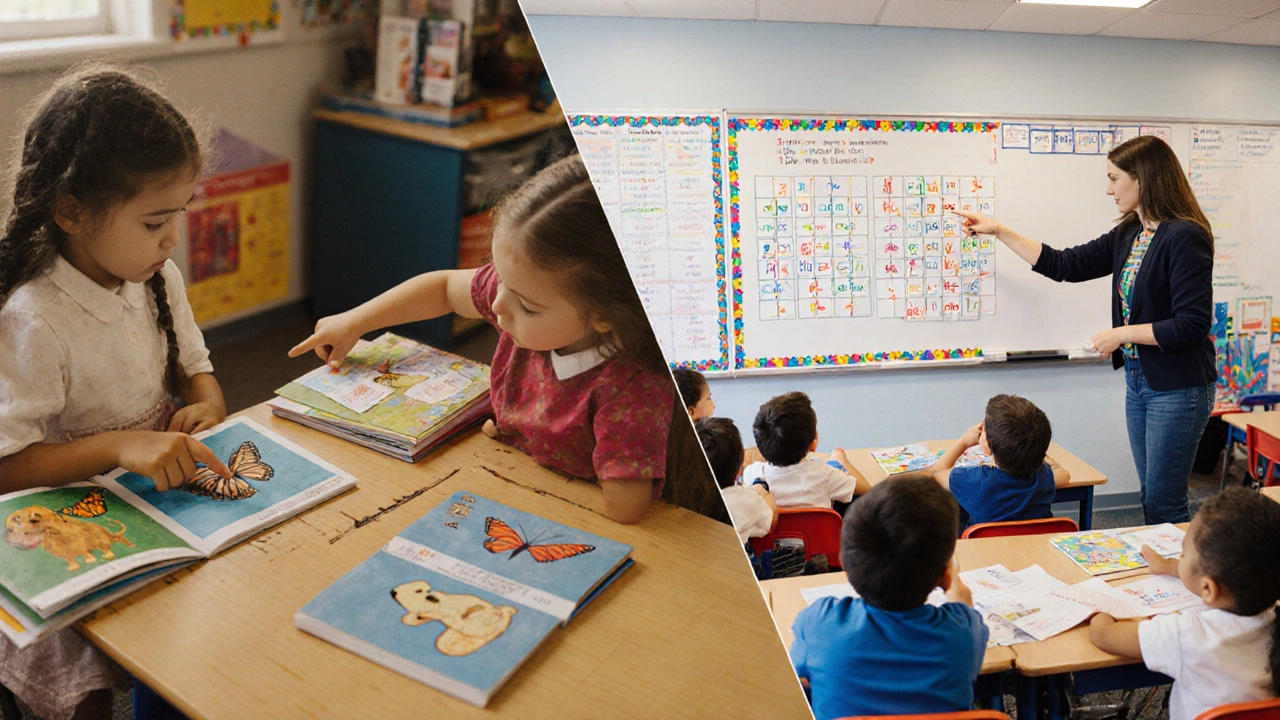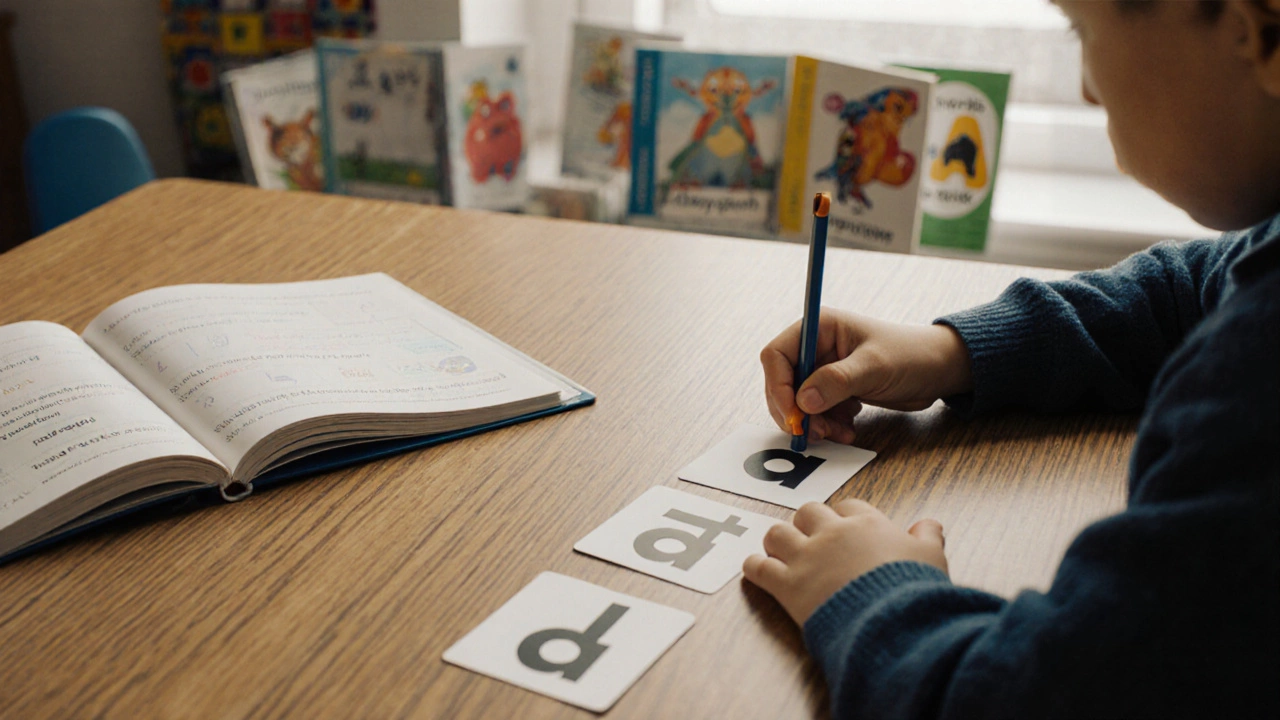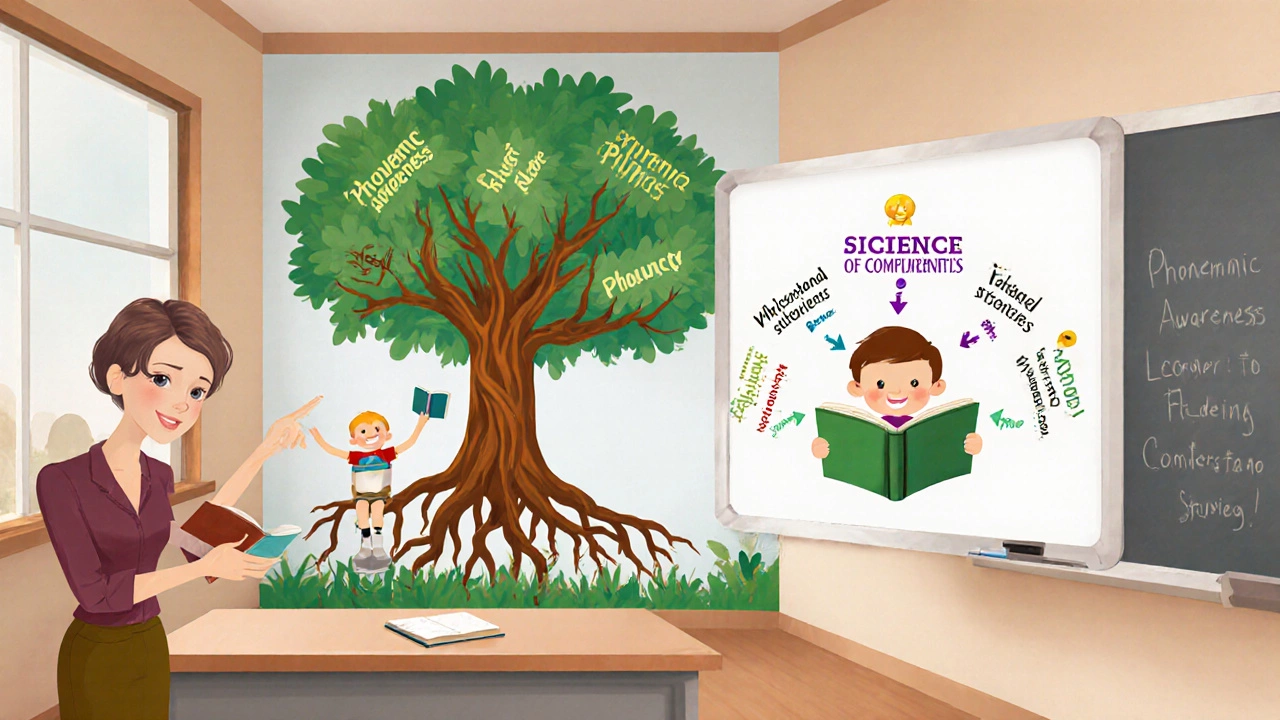
Phonics isn’t gone-it’s been buried under layers of theory, politics, and well-intentioned but flawed classroom practices. For decades, schools taught kids to sound out words: phonics-the systematic link between letters and sounds. It worked. But in the 1980s, a new idea took hold: kids should learn to read by context, guessing words from pictures or sentences. That’s whole language. It sounded kinder. It felt more natural. And for a while, it replaced phonics in most American and Australian classrooms.
By 2010, the results were clear. One in five Australian children couldn’t read at the expected level by Year 3. In the U.S., NAEP scores showed no real improvement in reading comprehension over 20 years, despite billions spent on new programs. Parents noticed. Teachers noticed. And then, slowly, the tide turned.
The Science of Reading Finally Got Its Day
What replaced phonics wasn’t another method-it was the abandonment of phonics altogether. What’s replacing whole language now? The science of reading. Not a buzzword. Not a trend. A body of evidence built over 50 years, from cognitive psychology labs to brain imaging studies. It says: reading is not a natural skill like speaking. It must be taught, explicitly and systematically.
The science of reading doesn’t just bring back phonics. It rebuilds reading instruction from the ground up. It includes five pillars: phonemic awareness, phonics, fluency, vocabulary, and comprehension. But here’s the key difference: phonics is no longer a standalone unit taught in isolation. It’s the foundation. Everything else-reading stories, discussing characters, writing responses-depends on it.
States like Mississippi and New South Wales didn’t just change curriculums. They rewrote teacher training. In Mississippi, after adopting the science of reading in 2013, fourth-grade reading scores jumped 44 points by 2022-the largest gain in U.S. history. In New South Wales, the government mandated that all public school teachers complete a 12-hour course on structured literacy by 2024. No more guessing. No more "look at the picture and guess the word."
What Schools Used to Do (And Why It Failed)
Whole language wasn’t evil. It came from a good place. Educators wanted kids to love books. They thought forcing kids to sound out "cat" and "dog" would kill the joy of reading. So classrooms filled with leveled readers, picture books, and "three-cueing" strategies. Kids were taught to use:
- Visual cues (what does the word look like?)
- Semantic cues (what makes sense in the sentence?)
- Syntactic cues (what sounds right grammatically?)
Imagine a child sees the word "butterfly" in a book. The picture shows a butterfly. The sentence says, "The _____ flew away." The child guesses: "bird?" "bug?" "butterfly?" If they guess right, they’re praised. But what happens when there’s no picture? What if the word is "dandelion"? Or "bureaucracy"? Or a sentence like, "The scientist observed the phenomenon"?
That’s the flaw. Guessing works for simple, predictable texts. It fails the moment real reading begins. Kids who rely on cues never learn to decode unfamiliar words. They memorize a few hundred high-frequency words-but when they hit Year 5 and encounter scientific, historical, or technical texts, they stall. And that’s when they fall behind.

What Schools Do Now
Today’s best classrooms look nothing like the ones from 20 years ago. Here’s what’s changed:
- Systematic phonics instruction starts in Kindergarten. Not "sometimes," not "if we have time." Daily, 20-minute lessons. Kids learn letter-sound relationships in order: s, a, t, p, i, n-not random words from a storybook.
- Decodable texts are used, not leveled readers. These are books built with only the phonics patterns kids have learned. No guessing allowed. If they haven’t learned "sh" yet, the word "ship" won’t appear. This builds confidence, not frustration.
- Teachers are trained to diagnose reading struggles early. By the end of Year 1, every child is screened for phonemic awareness. Those who lag get targeted intervention-no waiting for them to "catch up" later.
- Vocabulary and comprehension are taught after decoding is secure. You can’t understand a text if you can’t read the words. Schools now teach word meanings, sentence structure, and text features-but only after kids can sound out the words independently.
One teacher in Adelaide told me her class used to spend half the year on "reading circles" and drawing pictures of characters. Now, they spend 40 minutes a day on decoding. By Term 3, most kids are reading chapter books. The difference? They’re not just reading-they’re understanding.
The Big Misconception
Some people still think the science of reading means "drill and kill." That kids sit at desks chanting letter sounds all day. That’s not true. It means teaching skills so well that kids don’t have to struggle. Once they can decode, they read more. And the more they read, the more they learn.
Think of it like learning to drive. You don’t learn by watching movies about cars. You learn by practicing steering, braking, shifting gears-until it becomes automatic. Then you drive to the beach, the mountains, the city. The science of reading is the same. Phonics is the gearshift. Everything else is the journey.

What’s Still Missing
Not every school has made the switch. Private schools, some charter networks, and rural districts still use outdated methods. Many teachers were trained in the 2000s and haven’t been retrained. Textbook companies still sell "balanced literacy" kits with picture books and cueing worksheets.
And there’s resistance. Some parents and educators still believe that forcing kids to sound out words is "too rigid." They worry it kills creativity. But the data says otherwise. Kids who learn to decode early read more books. They ask more questions. They write longer stories. They’re not robots-they’re readers.
The real danger isn’t phonics. It’s the idea that reading can be learned by osmosis. That if you surround kids with books, they’ll figure it out. That’s like saying if you put a piano in a room, someone will learn to play without lessons.
What Parents Can Do
If your child’s school still uses guessing strategies, ask:
- Do they use decodable books in early grades?
- Is phonics taught systematically, not just when it pops up in stories?
- Are teachers trained in the science of reading?
- Is my child being screened for phonemic awareness by the end of Year 1?
At home, you can help. Read aloud every night-but don’t let your child guess. If they struggle on a word, say: "Let’s sound it out." Break it into chunks. "C-a-t." "Cuh-ah-tuh." "Cat." Praise effort, not guessing. Buy decodable books from publishers like Little Learners Love Literacy or Read Write Inc.
Reading isn’t magic. It’s a skill. And like any skill, it needs clear instruction, practice, and feedback. The days of guessing your way through a book are over. The science of reading isn’t a replacement for phonics. It’s the return of what actually works.
Is phonics still taught in schools today?
Yes-but not the way it used to be. Phonics is now part of a broader approach called the science of reading. It’s taught systematically, daily, and early, starting in Kindergarten. It’s no longer an optional activity or something you do once a week. It’s the foundation for all reading.
What’s the difference between phonics and whole language?
Phonics teaches kids how to decode words by sounding out letters and blending them. Whole language taught kids to guess words using pictures, context, or sentence structure. Phonics builds reading skills. Whole language often led to guessing habits that failed with complex texts.
Why did schools stop using phonics in the first place?
In the 1980s and 90s, educators believed reading was like learning to speak-something that happens naturally with exposure. They thought phonics was boring and rigid. Whole language promised joy and meaning. But research showed it didn’t work for many kids, especially those who struggled. The results were high failure rates in reading.
Can a child learn to read without phonics?
Some can-usually kids with strong verbal memory, rich language exposure, or who are naturally good at pattern recognition. But most can’t. Studies show that without phonics, up to 30% of children will struggle to read by Grade 3. Phonics isn’t just helpful-it’s essential for the majority of learners.
What should I look for in my child’s reading program?
Look for daily phonics lessons, decodable books, early screening for reading difficulties, and teachers trained in structured literacy. Avoid programs that encourage guessing from pictures or context. If your child is reading by memory or guessing, they’re not learning to decode-and that will catch up to them.


